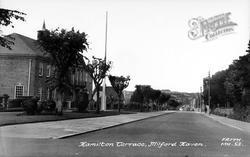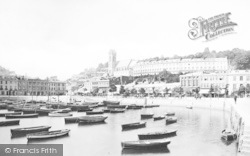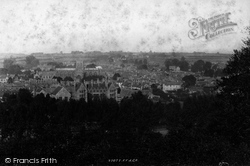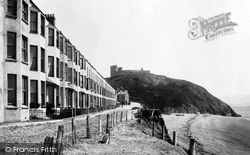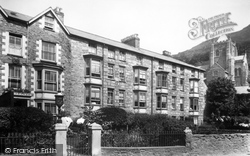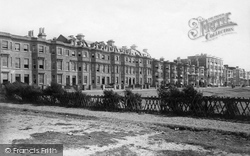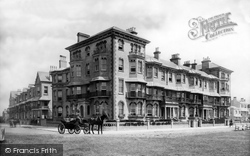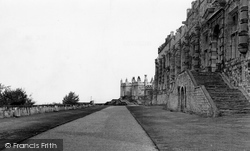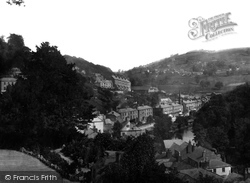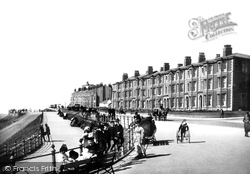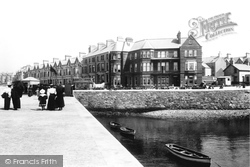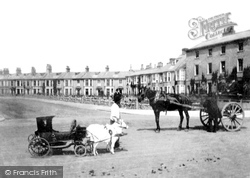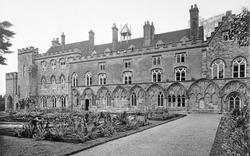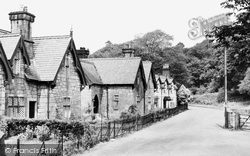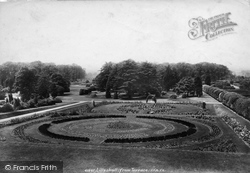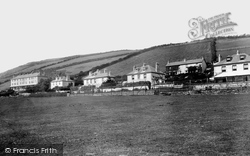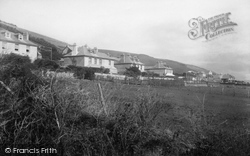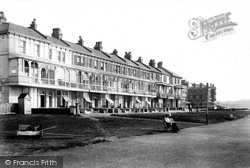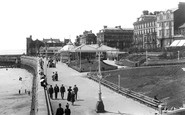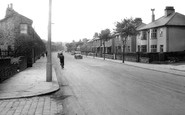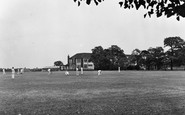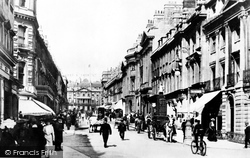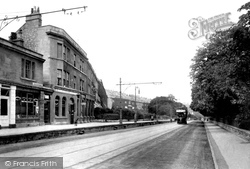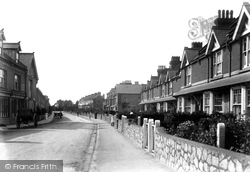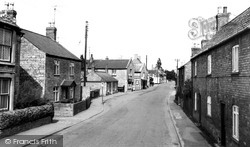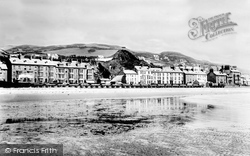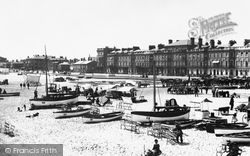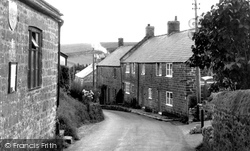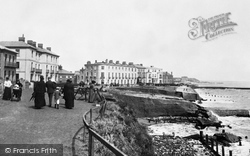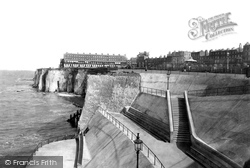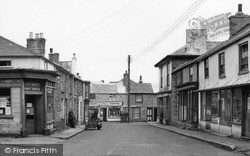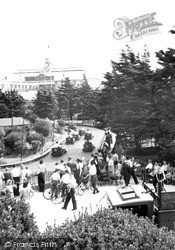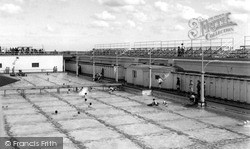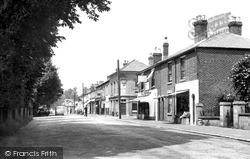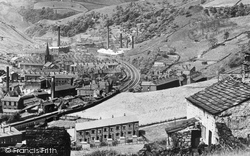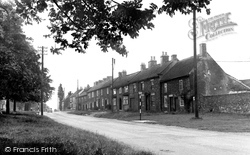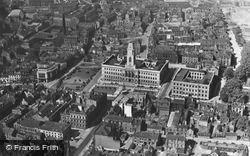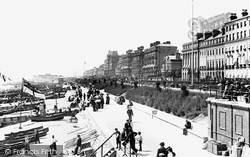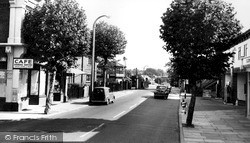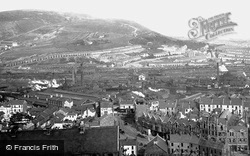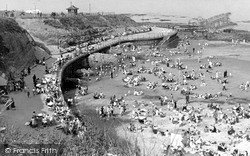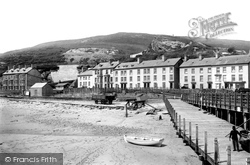Places
3 places found.
Those places high-lighted have photos. All locations may have maps, books and memories.
Photos
1,000 photos found. Showing results 181 to 200.
Maps
22 maps found.
Books
Sorry, no books were found that related to your search.
Memories
912 memories found. Showing results 91 to 100.
Childhood In The 1950s
It breaks my heart to see how the years, short-sighted councillors and rapacious businessmen have ruined this once noble and beautiful seaside resort. How could anybody have countenanced destroying this view for the ...Read more
A memory of Bridlington by
Stacksteads Boyhood.
My family moved from Haslingden to Newchurch Road in 1950 opposite the Farhome Tavern. As an eight year old I attended Western Junior School until 1953 leaving to attend Blackthorn Secondary Modern until June 1957 when our ...Read more
A memory of Stacksteads in 1950 by
Portmanmore Road 1964 Part Two
My dad was from Bridgend and my mother was from Llanharran. In 1961 soon after they’d got together, I was conceived, they left the valley's and moved in with my Nan, Maureen Payne / Pobihem, and Step Grampy, Polish ...Read more
A memory of Splott in 1964 by
Growing Up In Morgans Terrace
I was born in 1932 at 5 Morgan's Terrace and soon thereafter moved to No 18. There were 7 people living at that address, my maternal Grandfather John Lewis, my maternal Uncle Donald Lewis, my mother Greta ...Read more
A memory of Pontrhydyfen in 1930 by
Dysart Dovecote Crescent
Born in Dovecote Crescent in 1944, I remember walking to East Weymss by the Man o the Rock, the sea could be quite wild just past the 'Bing'. I used to help Shanny collect seacoal on his horse and cart, I think he was the ...Read more
A memory of Dysart in 1949 by
Greenhow Terrace
I married Helen in 1967 and the only property available to rent was in Benwell. As we were both far too young to know better we took a bottom flat in Greenhow Terrace. That's where it all went wrong, Benwell was being demolished ...Read more
A memory of Benwell in 1968 by
I Was Here In 1965
I remember the hut that was used as the changing rooms for all the outside sports, damn cold in the winter. Mr Lester was the Head at the time, mostly I remember the teachers Jim (Maths) and a tall teacher, very stern, ...Read more
A memory of Bexleyheath in 1965
Willenhall Revisited 2012
At the request of my 42-year-old daughter "to see where Mom was born and her childhood up to age 15 years" we made a nostalgic visit from Herefordshire back to HUMP-SHIRE as Willenhall was known, on New Year's Day ...Read more
A memory of Willenhall by
Living In Old Cullercoates
My grandparents lived in Simpson Street and auntie in Elizabeth Street. I am wondering if anyone remembers Garden Terrace, and the old school in John Street where my grandma worked? My grandfather was killed aboard ...Read more
A memory of Cullercoats in 1965 by
Furzton Lake
I am greatly surprised that there are no photos of Furzton Lake in the Frith archive. Our son David lived in a modern terraced house in Winsford Hill, Furzton until 2005. I remember there was a gap in the hedge with a gate we ...Read more
A memory of Furzton in 2000 by
Captions
549 captions found. Showing results 217 to 240.
The grandest building was Somersetshire Buildings on the right, a terrace of five houses which has pedimented end houses and a central house with a bowed front, all enriched with columns, capitals and
Continue east along London Road to Beaufort Buildings West and East, long gently curving terraces of 1791 to 1815.
New terraces have been built to accommodate the large numbers of tourists who were flocking to enjoy the delights of a seaside holiday on the Channel coast.
The village itself is a mix of stone and local brick, as in the terrace on the right.
Many of the terraces would have been built by local speculators as lodgings for visitors - the mildness and salubriousness of the climate made the town popular as a winter residence.
In this early view of the beach, there are already signs of local businesses capitalising on the new influx of visitors, with terraces of newly-built lodging houses and cheap hotels.
Cottages on the other side rise from Lea Cottage (left of centre) to the terrace comprising Hydrangea Cottage, Clematis Cottage, Rosemary Cottage and Sunset Cottage (beside the telephone kiosk).
After 1855, the town was developed mainly by Peter Bruff, who built Marine Terrace, the central row of houses in this picture.
In this early view of the beach, there are already signs of local businesses capitalising on the new influx of visitors, with terraces of newly-built lodging houses and cheap hotels.
This splendid view of the site of the former cliff-top fort was taken prior to the extension of the cliff-foot promenade.The terrace of houses in the centre of the picture, Fort Paragon, was constructed
Terraces of miners' houses form a triangle in Fore, Scorrier and Telegraph Streets. Here in Fore Street the shops include the post office and a hairdresser.
Here, those staying in Royal Terrace or at The Royal Hotel, could walk in peace, or linger for a while on one of the benches provided.
Cottages on the other side rise from Lea Cottage (left of centre), to the terrace comprising Hydrangea Cottage, Clematis Cottage, Rosemary Cottage and Sunset Cottage (beside the telephone
Many seats were provided for spectators and there was a terrace for sunbathing.
Pevsner described Netley as 'a Victorian period piece;' its streets of neat family villas and rows of renovated terraced cottages overlooking Southampton Water are certainly striking.
Many seats were provided for spectators and there was a terrace for sunbathing.
The chimneys of the textile mills fill the valley bottom, alongside the winding railway line and grim terraces of the millworkers' cottages. Above them, the moors watch over, unchanged.
Today modern houses have replaced a number of the terraced cottages, but the three on the right still stand. The village also has a Wesleyan chapel of 1821 and the Lord Nelson Inn on Front Street.
Much has changed today, with many of the terraced houses of miners from the former South Yorkshire coalfield now swept away and replaced by modern shopping and office blocks.
Apart from the small villa, the Italianate stucco terrace houses of the 1850s and later mostly remain.
The railway, factories and the brick terraces are to be avoided unless travelling from the M1 to Oadby, or to the racecourse.
Sailing ships on the River Tawe and the long lines of terraced workers' cottages tell the tale of Swansea in its heyday as a major industrial town.
On the north side of the village green is this raised terrace.
The seafront terraces and hills behind remain much the same today, and boating has grown ever more popular in the Dyfi estuary, which is fringed by wooded banks.
Places (3)
Photos (1000)
Memories (912)
Books (0)
Maps (22)


